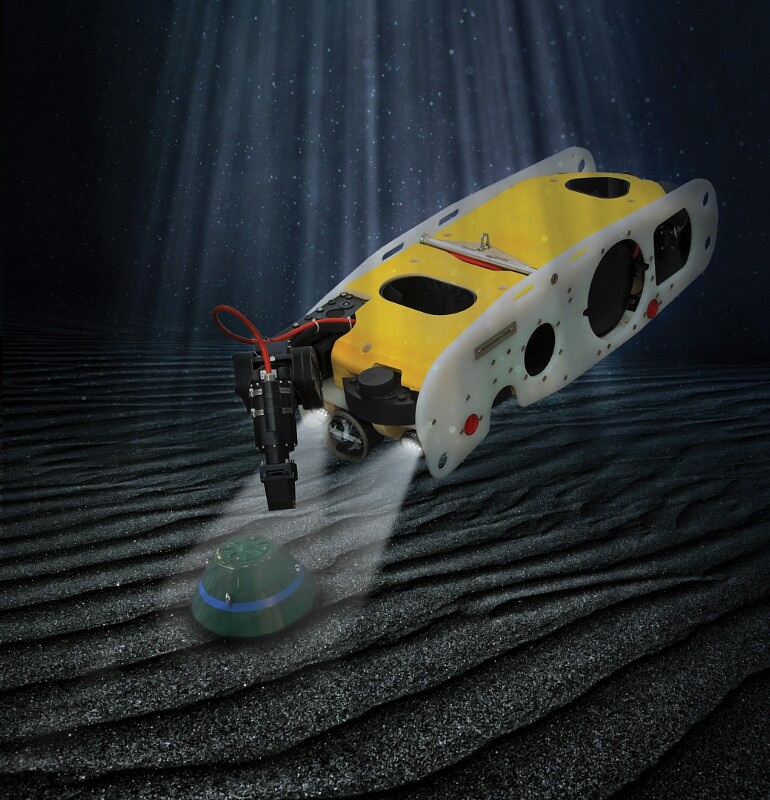Improvised Explosive Devices (IEDs) aren't just a threat on land, they're also a major problem underwater as well. To help track down and neutralize these devices, Saab has developed its Sea Wasp Remotely Operated Vehicle (ROV), which was unveiled at the US Navy League's Sea-Air-Space Exposition in National Harbor, Maryland.
While aircraft carriers and submarines may catch the eye, it's the lowly minesweepers that do a lot of the heavy lifting to keep shipping safe. Underwater explosives have been a major threat to navigation for hundreds of years, and minehunters and sweepers make up a large part of most advanced navies. Unfortunately, recent decades have seen the rise of small underwater terrorist IEDs, which are harder to detect and dispose of.
According to Saab, the standard procedure for handling IEDs is manually by teams of Explosive Ordnance Disposal (EOD) divers. Needless to say, this is very slow and very dangerous work.

Based on the Saab Seaeye line of commercial ROVs, the Sea Waterborne Anti-IED Security Platform (WASP) is designed to locate, identify, and dispose of IED in confined spaces, such as docks, ports, and harbors. By combining robotics with specialized military systems, the Sea Wasp can be controlled by a two-person team, who can remain out of water and a safe distance away from the action.
At 1.7 m (5.6 ft) long and weighing under 90 kg (198 lb), the hydro-dynamically stable Sea Wasp can be configured for individual missions and launched from a harbor wall, beach, or surface vessel. It travels at about 2.5 kt (3 mph, 4.6 km/h) at a depth of 60 m (200 ft) and has the ability to autonomously maintain station, avoid obstacles, and carry out waypoint navigation using a compass and Doppler Velocity Log (DVL) and Internal Measurement Unit (IMU) positioning systems as well as the Seaeye's iCON intelligent control system.
In addition, there's multibeam sonar, a color pan and tilt video camera, and a second camera for the manipulator arm. Also, 180 to 260 V electric power is provided through the 160 m (525 ft) power and fiber optic cable. The system includes its own generator, and the whole thing can be transported overland by a Light Support Vehicle.

Saab says that it's working with the US Combating Terrorism Technical Support Office (CTTSO), the US Navy EOD Group 2, the FBI Counter-IED Unit, and the South Carolina Law Enforcement Division's Counter-Terrorist Operations Maritime Response Uni to test prototypes of Sea Wasp over the next 10 to 12 months.
"Sea Wasp is a hybrid of pre-existing Saab technologies that can now be applied to an urgent worldwide need," says Bert Johansson, Sales Director for Underwater Systems within Saab's Dynamics business area. "Underwater EOD is a rapidly growing niche around the world, and Sea Wasp's capabilities correspond to that niche."
The video below shows U.S. military and law enforcement personnel being trained in the use of the Sea Wasp.
Source: Saab







